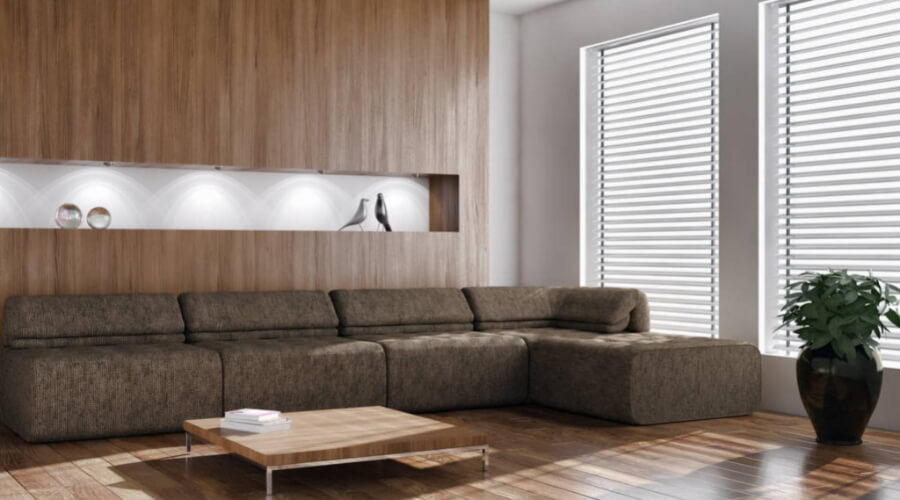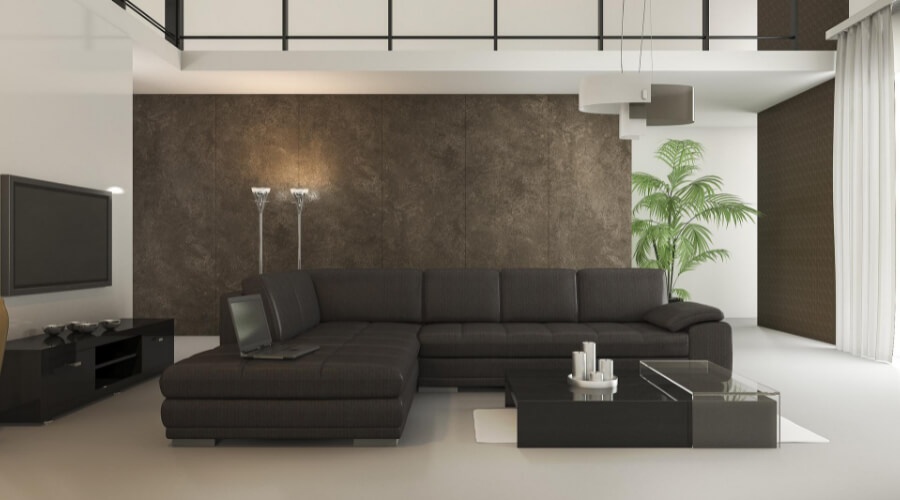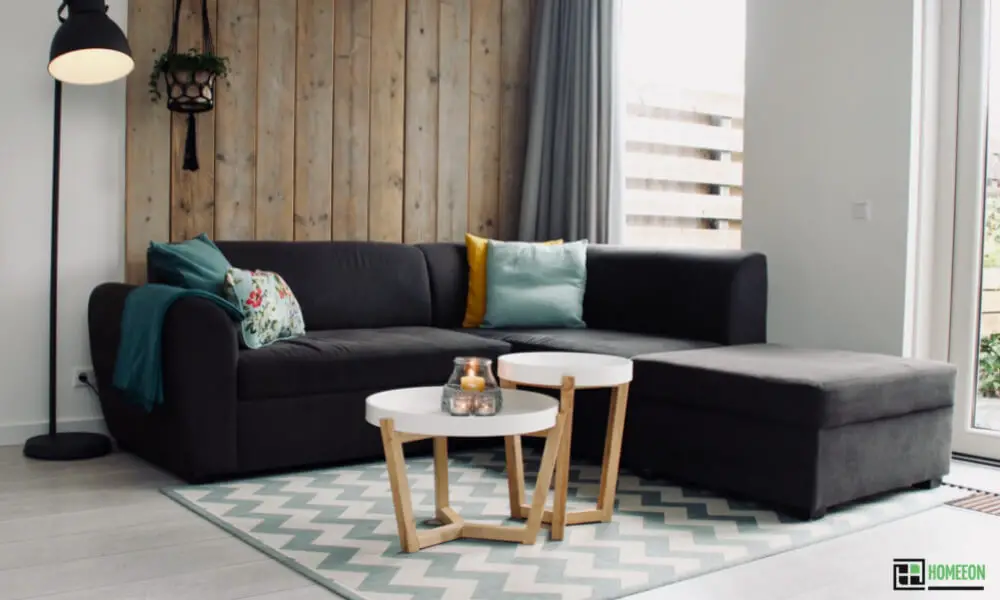Last Updated on July 13, 2023 By Emma W. Thomas
The difference between a left-hand facing sectional sofa and a right hand facing sectional sofa lies in the orientation of the chaise or the extended portion of the sofa. When facing the sofa, a left hand facing sectional has the chaise on the left side, while a right hand facing sectional has the chaise on the right side. This orientation is determined by the perspective of a person standing in front of the sofa and looking at it.
Key Differences Between A Left-Hand Facing And A Right-Hand Facing Sectional Sofa
When it comes to choosing the perfect sectional sofa for your living space, it’s important to consider the orientation that will work best for your needs. A common option you’ll come across is the choice between a left-hand facing and a right-hand facing sectional sofa. While they may seem similar, there are key differences between the two that can make a big impact on the functionality and layout of your room. Let’s explore these differences:
- Orientation: The main difference between a left-hand facing and a right-hand facing sectional sofa is the orientation of the chaise or extended portion of the sofa.
- Perspective: The orientation is determined by the perspective of a person standing in front of the sofa and looking at it.
- Chaise Placement: In a left-hand facing sectional, the chaise is positioned on the left side when facing the sofa. In a right-hand facing sectional, the chaise is on the right side when facing the sofa.
- Room Layout: The choice between left-hand facing and right-hand facing depends on the layout and configuration of the room to ensure a proper fit and optimal functionality.
- Flexibility: The orientation of the sectional affects how it can be positioned within a room and how it interacts with other furniture pieces.
- Personal Preference: Ultimately, the choice between left-hand facing and right-hand facing is based on personal preference and the desired aesthetic and functionality for the space.
Parts Of A Sectional Sofa
Sectional sofas have different parts that join to form a single multipurpose seat. The main components are:
| Part | Description |
| Sofa part | Part of the seat with three cushions |
| Love seat | This is a sofa with two cushions, which can accommodate two people. The principle applies to a sectional sofa too. |
| Chaise lounge | The part on your sectional couch has a deeper cushion than the other parts. It is made with deeper cushions to allow you to stretch out while still seated upright. |
| Corner wedge | The part or section that helps connect the two parts of the sofa into one piece. |
| Recliner | Any section of the sectional sofa offers similar features to a reclining couch. The backrest slides down and back while the footrest pops out and up. |
| Armrest | An armrest is a spot at the end of the couch where you can comfortably rest your hand. |
| Sofa bed | Some sectionals offer a sleeper section. A part of the couch that is pulled outward to form a bed is the sofa bed. |
| Footrest or ottoman | An optional part is used to fill the empty spaces in front of the sectional couch and as a footrest. It is mostly used with the U-shaped sectional. |
Which Side Should A Sectional Sofa Face?

Whether you are purchasing an RHF or LHF couch, the right one is dictated by the space you are looking to fill.
You can use the two couches to either open or close a section in your living space. To open the sitting area, you should ensure that the extended chaise is towards the corner of the room. By doing this, the armrest won’t look like it’s blocking you from accessing the sofa.
To close the sitting area, you have to place the seat such that the armrest is on the furthest end. An armrest can also be used as a mark to show the division of the sitting areas.
Why Buy A Sectional Sofa And Not A Traditional Couch?
Choosing between the traditional sofa and the new designs of the sectional sofa can be a challenge. However, sectional sofas come with the following advantages over conventional couch.
1. Extra Seating Space
A sectional sofa offers more seating space than a regular couch. Some sectional sofas might be small, but they provide extra sitting space at the chase part.
A large sectional sofa also offers you more space to entertain people without anyone feeling hidden in the back.
2. Versatility
A sectional sofa provides space to sit on and is also decorative furniture. Again it can be used in a small area to create more sitting places or, in some cases, to take a nap.
3. Style
Unlike the common sofas, sectional ones are unique and create a distinct style. If you have an open floor plan, this sofa can help make the space look even better. It makes the space feel more open and free.
How To Choose A Sectional Sofa?

There are many designs to pick from when it comes to sectional sofas. Here are a few factors to guide you.
1. Your Budget
It is best to have a rough budget in mind before going to a furniture store as various sectional sofas come at a different price range. The sofa price is generally determined by factors such as material, additional features, and so forth. Mostly, premium sofas tend to be expensive.
Always ask for a catalog divided according to the price range to avoid purchasing a sofa out of your budget.
2. The Size And Shape Of The Room Where The Couch Will Go
Before heading to the store or opening your browser, you must have a rough idea of the size of your room. This way, you can always know which couch is too big, too small, or adequate to fit in your space.
General rules to follow:
1. Chaise Placement
The chaise on your sectional sofa should face the direction with the least traffic in your space. Also, the chaise should not occupy the entire room such that people will have to walk around it in the house.
2. Architectural Features Of Your Home
When arranging your sectional sofa, ensure that no part of the couch is blocking the features of your home. The architectural features include a fireplace, window, and shelving.
3. The Spacing
Sectional sofas can be placed in a corner if the space is limited. If you have enough space, you should leave enough room for people to pass through or around. The free areas help ensure that the room does not feel overstuffed.
4. The Function Of The Sofa And The Room
Design is not always about how a piece of furniture looks when in your living room. How you plan on using it also matters. Think about the space you want the sectional couch to go into and its frequent use. Once you have established the function of the room, the role of the sofa becomes automatic.
5. Consider The Furniture Scale
The furniture scale is used to refer to the height, width, and length of your furniture. Almost all sofas have the same height and width. However, some other furniture in your room, like tables, might be smaller than usual. In situations where the furniture you already own is smaller or bigger, you will need to purchase a sofa that follows the trend of the other pieces of furniture.
It is also important to note that your interior design dictates the scale of your furniture. For example, if you have high ceilings, it would not look right to have tiny sofas. The room will overshadow everything in the room.
6. The Interior Design
When purchasing a new sectional sofa, or any furniture, you need it to follow the interior decor. Having one piece of furniture that looks out of place can ruin the entire outlook of your living space.
Common Sectional Sofa Types And Shapes
Below are the common types and shapes of sectional sofas to consider:
1. L-shaped Sectional Couch
Of all the sectional sofas, this is the most popular. The couch looks exactly like the letter L, with one side shorter than the other.
2. Chaise Sectional Sofa
This sofa takes up the same shape as the L-shaped sofa. The difference between the chaise sofa and the L-shaped sofa is that: the chaise part of the chaise sofa is attached to one side of the sectional.
3. The Curved Sectional Couch
A curved sectional does not have a right-angle corner; it looks continuous. It takes advantage of curved lines. It is the best design if you host guests frequently. It ensures everyone seated can see their counterparts and have conversations.
4. U-shaped Sectional Sofa
As the name implies, once the couch is set up, it forms the letter U. To have this sofa, you need a lot of space to hold it. It is common to have an ottoman in the area inside the U-shape.
5. Symmetrical Sectional Couch
The symmetrical sectional takes up the same design as the L-shaped sofa; the main difference is that the couch is of the same length on both sides. The couch offers more sitting area because of the equal length in the two sections.
6. Sleeper Sectional Sofa
This is the most versatile sectional sofa. The couch has a sitting option similar to other sectional sofas and offers a sleeper sofa option. The sleeper part of the soda comes in different sizes.
7. The Reclining Sectional Couch
This sectional sofa has a few sitting spaces installed with a reclining feature. One or more sitting spaces can recline while the rest remain upright. Since reclining sofas tend to be big, a reclining sectional also has to be big. It requires more space than the other types.
8. Modular Sectional Sofa
The modular sectional sofas come with multiple individual pieces that can be separated and used alone. The pieces are joined together to form one entity. You can rearrange the pieces to fit whatever formation you want.
Final Thoughts
Right-hand Facing sectional and Left Hand Facing sectional are terms used to refer to where the armrest is when you look directly at a sectional sofa. Manufacturers and sellers are well aware of the two types. But, as a consumer, you need to know the difference to purchase the type that will complement your interior decor.
References:
https://www.starfurniture.com/sectional-sofa-guide-how-to-choose-a-sectional.html
Emma is a graduate of Domestic Science or Family and Consumer Sciences (Home Economics) from the University of Wisconsin. She has 7 years of experience Working with the strategic section of BestBuy and now writing full-time for Homeeon.
From Managing the Home, Interiors, Cleaning, and Exteriors to Gardening and everything about Making A Home Liveable – is her passion and this Homeeon is the result of this.
Emma loves decorating her home with the best stuff found online. She cares about quality over anything and writes reviews about them here in Homeeon. Get in touch with her over Pinterest.
Keep reading her blogs.

